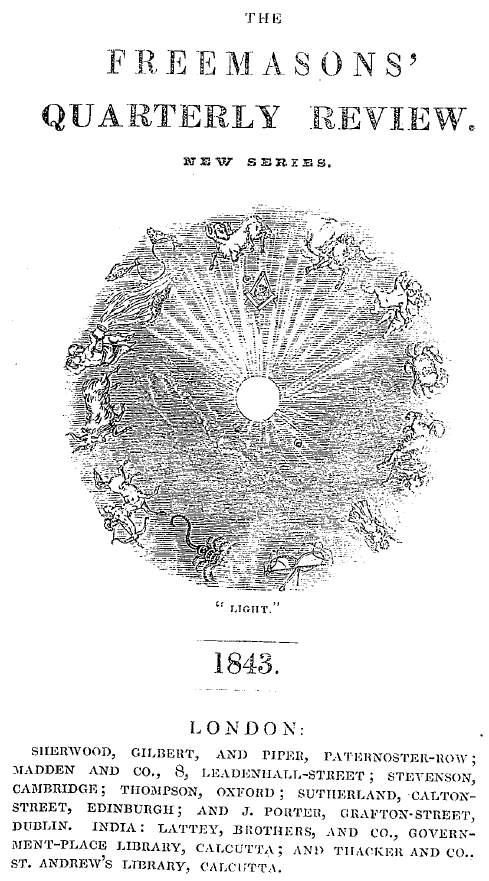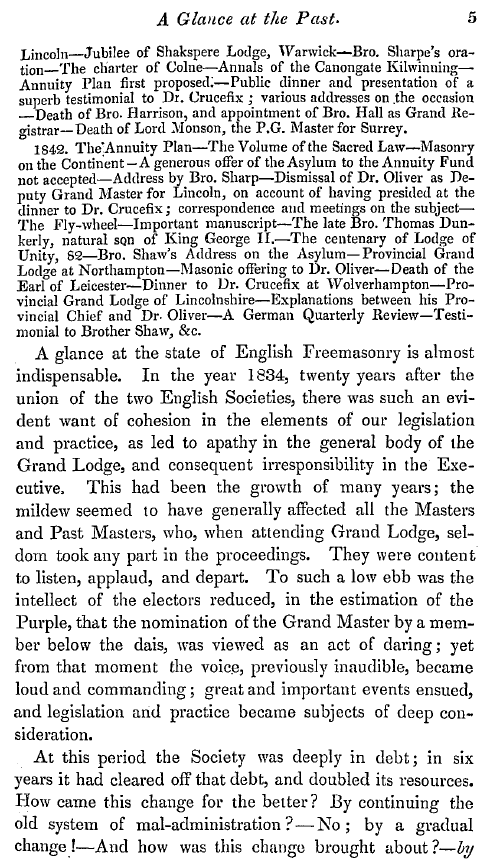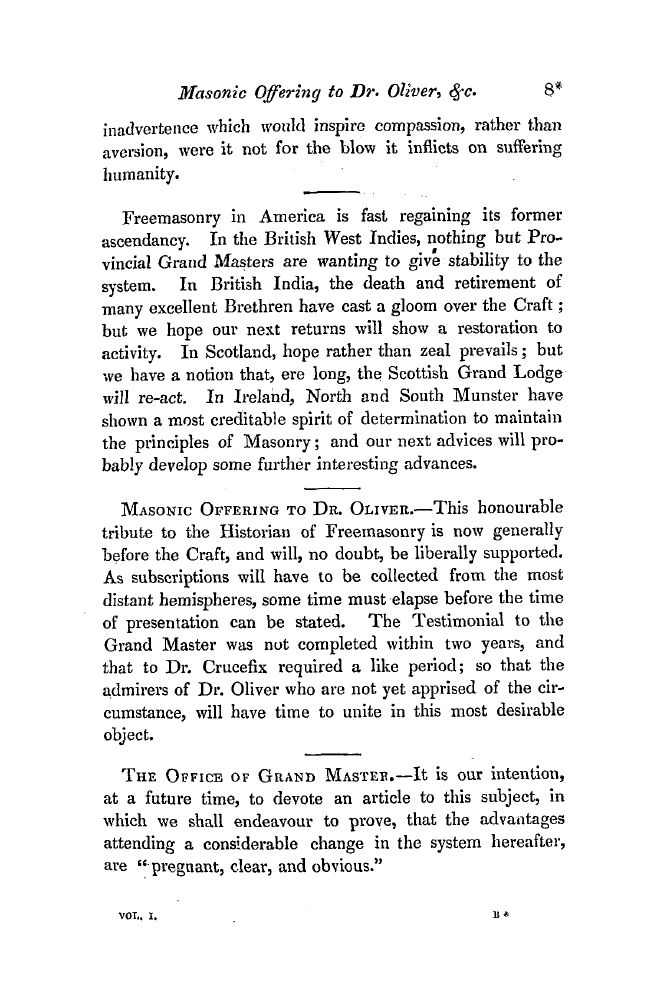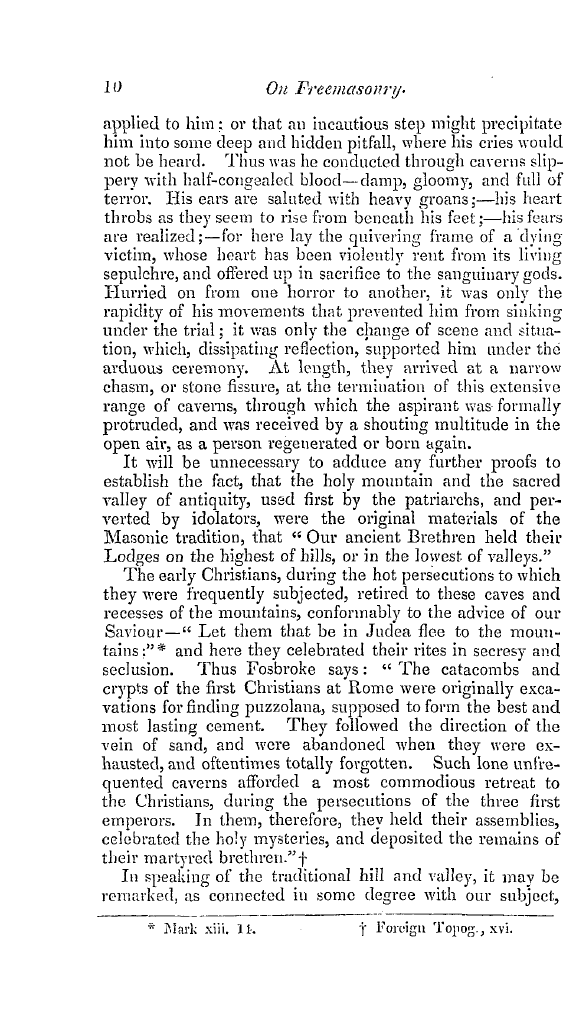-
Articles/Ads
Article M. CLAVEL'S PICTURESQUE MASONRY. ← Page 5 of 5
Note: This text has been automatically extracted via Optical Character Recognition (OCR) software.
M. Clavel's Picturesque Masonry.
the English , and the Germans , enter the order in succession . Again , the priests , and members of monastic and military orders , obtained admission in considerable numbers , and assisted them in their labours as architects , and often as simple workmen . Some of these last-mentioned , finally , detached themselves from the main body , and formed separate societies , whose special duty it was to build roads and bridges , and to defend travellers against the attacks of robbers , noble or otherwise , who infested the hi
ghways . " Of these were the Pontiff brothers , who devoted themselves exclusively to all that related to bridges . We find them established at Avignon from 117 S . It was they who constructed the bridge of that city , and nearly all those in Provence , Auvergne , Lorrain , the Lyonnese , & c . They formed a religious community , but they admitted laymen into their society . This we find , from an act passed in the
year 1469 , in which the distinctive title of ' merchant' is given to certain parties belonging to the order of the Pontiffs . This order was still to be found at Lucca , in Italy , as late as 15 P 0 . Their chief had the title of Master . John of Medicis was Master of the order in 1562 . " The Templars , at this time , devoted themselves to the formation and maintenance of roads , and the construction of bridges and hospitals . One of the roads into Spain from the P which passed
bRonyrennees , y cesvalles , and leads to Lower Navarre , still retains the name of ' The Road of the Templars . ' It was made by those Knights , who also guarded travellers throughout the whole of its extent . The Templars undertook the duty of maintaining the three Great Roman Roads which existed south of the Pyrennees . To them , likewise , is ascribed the
erection of the greater part of the bridges , inns , and hospitals , from Iloussillon to St . Jago-di-Compostello , in the provinces of Catalonia , Arragon , Navarre , Burgos , Valencia , Leon , Astorga , and Gallicia . * ' - ' * , " It would appear , that towards the end of the fifteenth century , persons admitted as honorary members and patrons into the Masonic fraternities , had established , independently of these corporations , private societies ; which , abandoning the material or operative objects for which
they were formed , confined themselves to the mystical parts of the system . In fact , there existed at Florence in 1512 , a company or association of the trowel—composed of learned men and persons of condition in society—whose emblems were the trowel , the hammer , and the square , and whose patron saint was St . Andrew , the patron likewise of the Scotch Masons . There had been established in the same city in 1480 , another society , called the Platonic Academy . The hall in which this society
held its sittings still exists ; and the sculptures with which it is ornamented present us with Masonic attributes and emblems . " However originating , we find the corporations of building workmen in every country in Europe . They raised , in the thirteenth and fourteenth centuries , the Cathedrals of Cologne and Meissen ; and about the year 1410 , that of Valenciennes . They it was , who built shortly after 1385 , the celebrated convent of Batalha , in Portugal , and the monast of MonteCassinoin Ital The most
ry - , y . splendid monuments of France , England , and Scotland , were their work . On all their buildings they have left imprinted their Masonic marks . Thus , in the dome of Wortzburgh—in front of the entrance to the chamber of the deadwe see on one side , on the chapter of a column , the mysterious inscription ' J , ' and at the other side , the word ' B , ' on the shaft of a pillar . And the figure of Christ , which occupies the top of the portal of the Church of St Denis , has his hand placed in a position well known to all existing Freemasons . "
Note: This text has been automatically extracted via Optical Character Recognition (OCR) software.
M. Clavel's Picturesque Masonry.
the English , and the Germans , enter the order in succession . Again , the priests , and members of monastic and military orders , obtained admission in considerable numbers , and assisted them in their labours as architects , and often as simple workmen . Some of these last-mentioned , finally , detached themselves from the main body , and formed separate societies , whose special duty it was to build roads and bridges , and to defend travellers against the attacks of robbers , noble or otherwise , who infested the hi
ghways . " Of these were the Pontiff brothers , who devoted themselves exclusively to all that related to bridges . We find them established at Avignon from 117 S . It was they who constructed the bridge of that city , and nearly all those in Provence , Auvergne , Lorrain , the Lyonnese , & c . They formed a religious community , but they admitted laymen into their society . This we find , from an act passed in the
year 1469 , in which the distinctive title of ' merchant' is given to certain parties belonging to the order of the Pontiffs . This order was still to be found at Lucca , in Italy , as late as 15 P 0 . Their chief had the title of Master . John of Medicis was Master of the order in 1562 . " The Templars , at this time , devoted themselves to the formation and maintenance of roads , and the construction of bridges and hospitals . One of the roads into Spain from the P which passed
bRonyrennees , y cesvalles , and leads to Lower Navarre , still retains the name of ' The Road of the Templars . ' It was made by those Knights , who also guarded travellers throughout the whole of its extent . The Templars undertook the duty of maintaining the three Great Roman Roads which existed south of the Pyrennees . To them , likewise , is ascribed the
erection of the greater part of the bridges , inns , and hospitals , from Iloussillon to St . Jago-di-Compostello , in the provinces of Catalonia , Arragon , Navarre , Burgos , Valencia , Leon , Astorga , and Gallicia . * ' - ' * , " It would appear , that towards the end of the fifteenth century , persons admitted as honorary members and patrons into the Masonic fraternities , had established , independently of these corporations , private societies ; which , abandoning the material or operative objects for which
they were formed , confined themselves to the mystical parts of the system . In fact , there existed at Florence in 1512 , a company or association of the trowel—composed of learned men and persons of condition in society—whose emblems were the trowel , the hammer , and the square , and whose patron saint was St . Andrew , the patron likewise of the Scotch Masons . There had been established in the same city in 1480 , another society , called the Platonic Academy . The hall in which this society
held its sittings still exists ; and the sculptures with which it is ornamented present us with Masonic attributes and emblems . " However originating , we find the corporations of building workmen in every country in Europe . They raised , in the thirteenth and fourteenth centuries , the Cathedrals of Cologne and Meissen ; and about the year 1410 , that of Valenciennes . They it was , who built shortly after 1385 , the celebrated convent of Batalha , in Portugal , and the monast of MonteCassinoin Ital The most
ry - , y . splendid monuments of France , England , and Scotland , were their work . On all their buildings they have left imprinted their Masonic marks . Thus , in the dome of Wortzburgh—in front of the entrance to the chamber of the deadwe see on one side , on the chapter of a column , the mysterious inscription ' J , ' and at the other side , the word ' B , ' on the shaft of a pillar . And the figure of Christ , which occupies the top of the portal of the Church of St Denis , has his hand placed in a position well known to all existing Freemasons . "





















































































































































